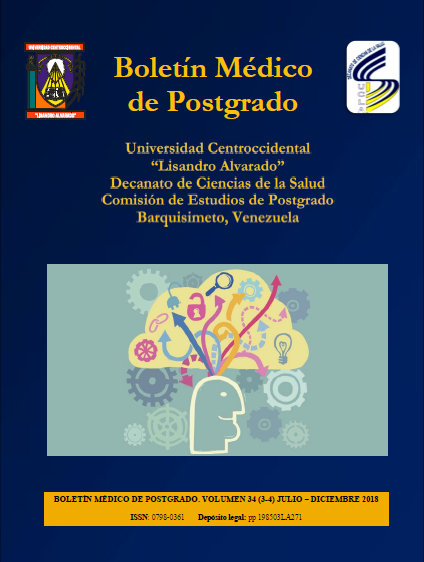Inflamation induced by formaline promotes the development of melanoma b16 in Balb/C mice
Keywords:
cancer, melanoma B16, Balb/C mice, inflammation, formalinAbstract
Cancer is the second cause of death around the world, representing melanoma 1% of all cancer. It has been suggested that cancer is a systemic inflammatory disease that generates free radicals causing mutations and releasing trophic factors that favors tumor initiation and cell proliferation. In order to study the effect of formalin-induced inflammation on the development of B16 melanoma, 22 Balb/C mice were divided into three groups: Control Melanoma (CM), Melanoma-Formalin (MF) and Control Formalin (CF). CF and MF groups were injected with 20 μl of 2% formalin on the back of the right paw at the subcutaneous level; CM and MF groups were transplanted with 100,000 melanocytic cells subcutaneously in the plantar surface of the right paw, 24 hours after formalin. CF group mice developed an inflammation that was maximal between the first and second week, then progressively diminished until disappearance by the sixth week. CM group mice developed tumoral macules up to 30 mm², which involute spontaneously. MF group mice developed tumor masses that reached up to 300 mm³ between 3-4 weeks post-transplant and then progressively decreased in volume. CF and MF mice significantly decreased in weight with respect to CM group. In conclusion, inflammation induced by formalin favors tumor development in an allogenic model of malignant melanoma, indicating that anti-inflammatory treatments may be useful in the management of melanoma.
Downloads
References
2. Organización Mundial de la Salud. Cáncer. Disponible en: http://www.who.int/mediacentre/factsheets/fs297/es/.
3. Anuario de Mortalidad. [Internet]. MPPS Disponible en: www.mpps.gob.ve.
4. Lavanderos J, Pérez J, Jeria S. Actualizaciones en melanoma maligno cutáneo. Cuadernos de Cirugía. 2010; 24: 47-56.
5. Lihua T, Kepeng W. Chronic Inflammation in Skin Malignancies. J Mol Signal 2016; 11: 2.
6. Coussens L, Werb Z. Inflammation and cancer. Nature. 2002; 420(6917):860-7.
7. Kuzu O, Nguyen F, Noory M, Sharma A. Current state of animal (mouse) modeling in melanoma research. Cancer Growth Metastasis 2015; 8(1): 81-94.
8. Teicher B. Tumor Models in Cancer Research. Humana Press; New York, Dordrecht, Heidelberg and London: 2010.
9. La Rosa D, Rahman A, Turka L. The innate immune system in allograft rejection and tolerance. J Immunol 2007; 178(12):7503-9.
10. Watanabe H, Numata K, Ito T, Takagi K, Matsukawa A. Innate immune response in Th1-and Th2-dominant mouse strains. Shock 2004; 22(5): 460-6.
11. Luanluan L, LI H, Yafang H, Yixiao B. Differential effects of formaldehyde exposure on airway inflammation and bronchial hyperresponsiveness in BALB/c and C57BL/6 mice. PLOS ONE 2017; 12(6): e0179231
Published
How to Cite
Issue
Section
Las opiniones expresadas por los autores no necesariamente reflejan la postura del editor de la publicación ni de la UCLA. Se autoriza la reproducción total o parcial de los textos aquí publicados, siempre y cuando se cite la fuente completa y la dirección electrónica de esta revista. Los autores(as) tienen el derecho de utilizar sus artículos para cualquier propósito siempre y cuando se realice sin fines de lucro. Los autores(as) pueden publicar en internet o cualquier otro medio la versión final aprobada de su trabajo, luego que esta ha sido publicada en esta revista.



